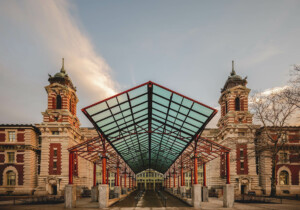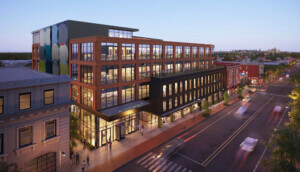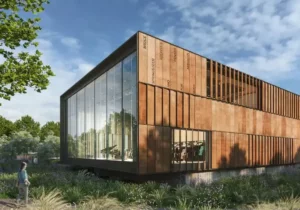Following a busy day of building and a nighttime public screening of Jason Hutt’s 2013 documentary film Sukkah City, the 11 temporary structures at the heart of the multiday Sukkah Village 2021 event in downtown Princeton, New Jersey, made their debut on September 20. The hut-like installations, designed by eight local architecture and design firms and two competition-winning student teams from the New Jersey Institute of Technology, will remain on view through Wednesday, September 29, before they are dissembled the following day and auctioned off for charity. The online bidding process, which is active now, closes shortly after the conclusion of the event.
Launched to coincide with the weeklong Jewish harvest celebration of Sukkot that begins five days after Yom Kippur, Princeton’s Sukkah Village 2021 was inspired by Sukkah City, a similar design competition/exhibition held in Manhattan’s Union Square in 2010. (That event was the subject of the aforementioned documentary.) Sukkah Village 2021 organizer Joshua Zinder, founding principal of Princeton-based multidisciplinary architecture and design practice JZA+D and current president of the New Jersey chapter of the American Institute of Architects, was also a participant in the 2010 event. Although Princeton’s Sukkah Village comes over a decade after the high-profile Manhattan event, the pressing social issues—homelessness, food insecurity, a dearth of affordable housing, and the plight of refugees—that Zinder aims to explore through both the installations and a series of Zoom panel conversations held throughout the run of the event are more salient than ever.
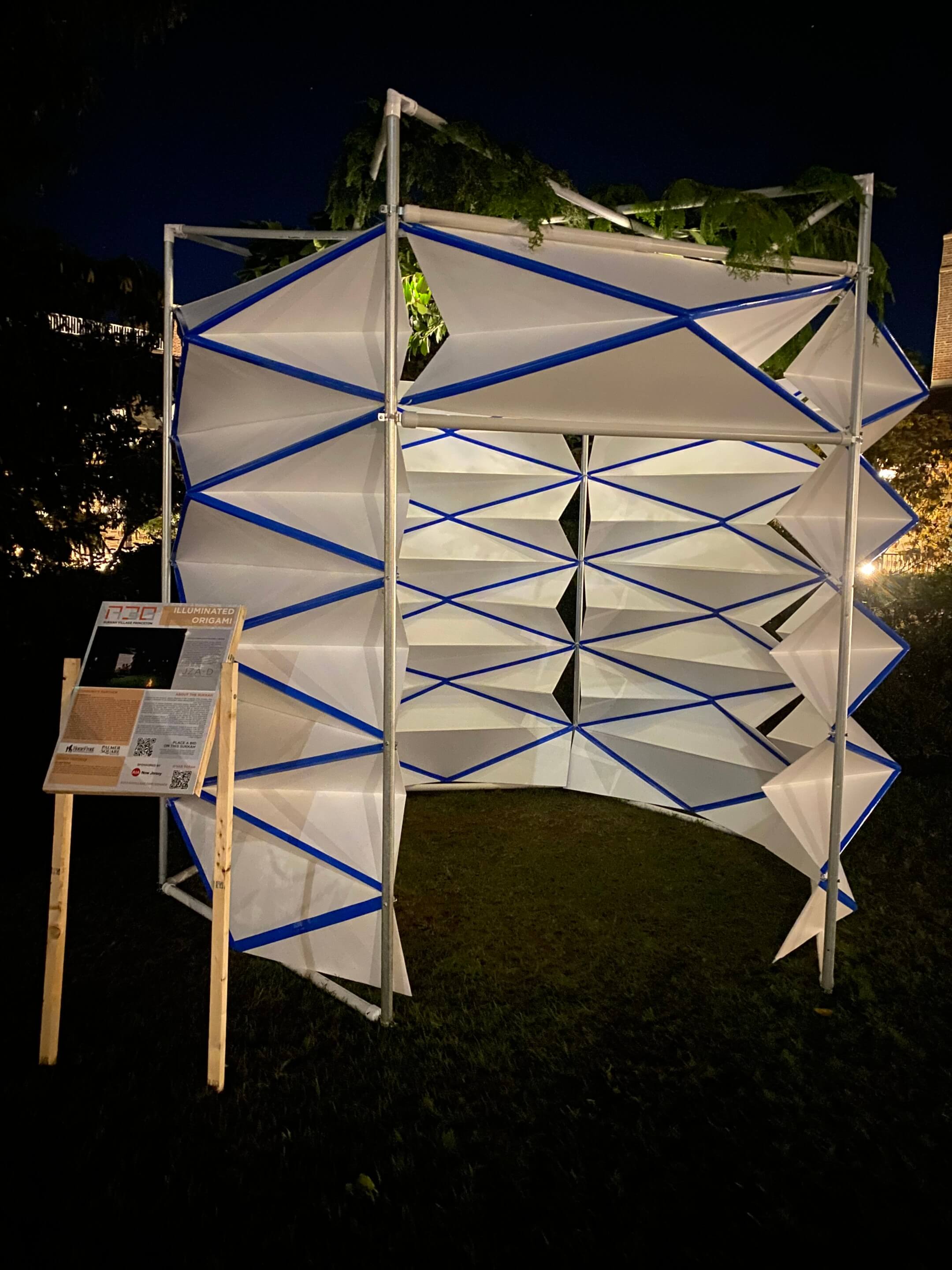
Thematically, these issues tie in squarely with Sukkot, which, in the words of Daniel Herscovici, board president of major philanthropic event partner the Jewish Federation of Princeton Mercer Bucks, is observed to commemorate “the years the Jews spent wandering the desert, and how G-D sheltered us from the harsh desert conditions.”
“Sukkah Village 2021 is an opportunity to highlight issues of housing insecurity faced by our local community and communities around the world, to spark conversations about these and related issues, and to inspire each other to address them,” added Herscovici in a press statement.
As for the 11 sukkahs now on public view, roughly half have been erected on the campus of the Jewish Center of Princeton, which will serve as the core Sukkah Village, while the rest are installed at five nearby partner venues. The names of the sukkahs and their designers, organized by location, are:
Jewish Center of Princeton
Nested Sukkah | JZA+D
Exodus Evolution | HDR
Sukkah Drash | Michael Landau Architects
Tree as Shelter | Seth A. Leeb Architecture
A Windowed Sukkah | winning New Jersey Institute of Technology design team (Josh Merino, team lead, with Daniela Liberato, Claudia Aboudiwan, Silas McBride)
Celestial Tensility | winning New Jersey Institute of Technology design team (Michael Barrios, team lead, with Jaison Desai, Kyle Schmitt, Reyne Bennett, Jude Cullen, Luis Enriquez)
YWCA Princeton
Traversing Planes | Michael Graves Architecture + Design
Trinity Church
Communal Convergence | KSS Architects
Nassau Presbyterian Church
palletHIVE | Mills + Schnoering Architects
Arts Council of Princeton
Rising from Ashes | Studio Hillier
Palmer Square
Illuminated Origami | JZA+D
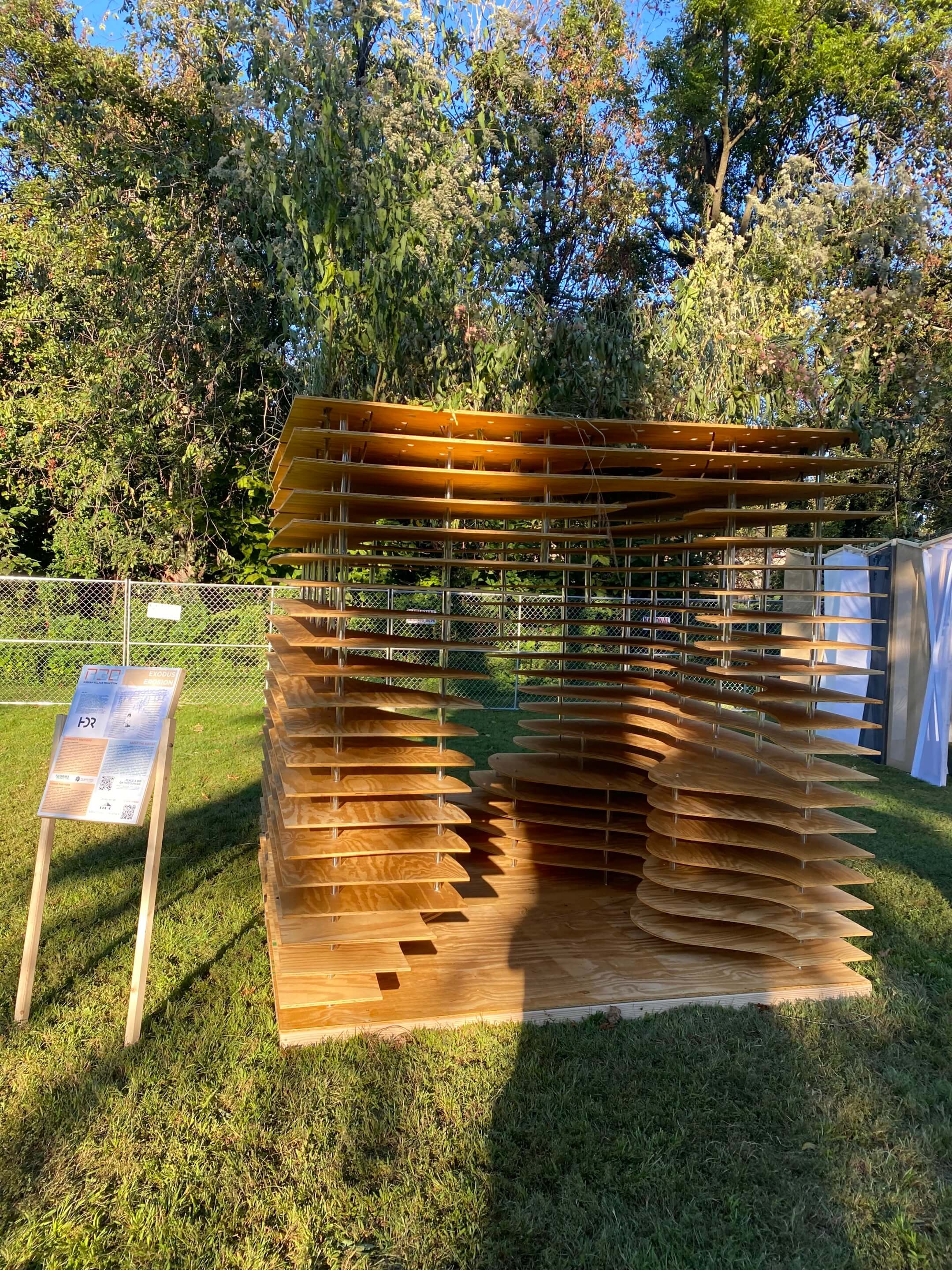
As mentioned, a series of panel discussions on topics including food insecurity and sustainable architecture are scheduled throughout the festival. On Sunday, September 26, an organized “Sukkoh Hop” tour of all 11 sukkahs will be held; the designers of each shelter will be on-hand to discuss their respective projects. Also scheduled for that day are family crafting activities hosted by the Jewish Center of Princeton. The local charity-benefitting online auction closes on October 5.
Alongside the Jewish Federation of Princeton Mercer Bucks, AIA-New-Jersey, and the aforementioned venue partners, a full list of sponsors and community organizations participating in Sukkah Village 2021 can be found here.
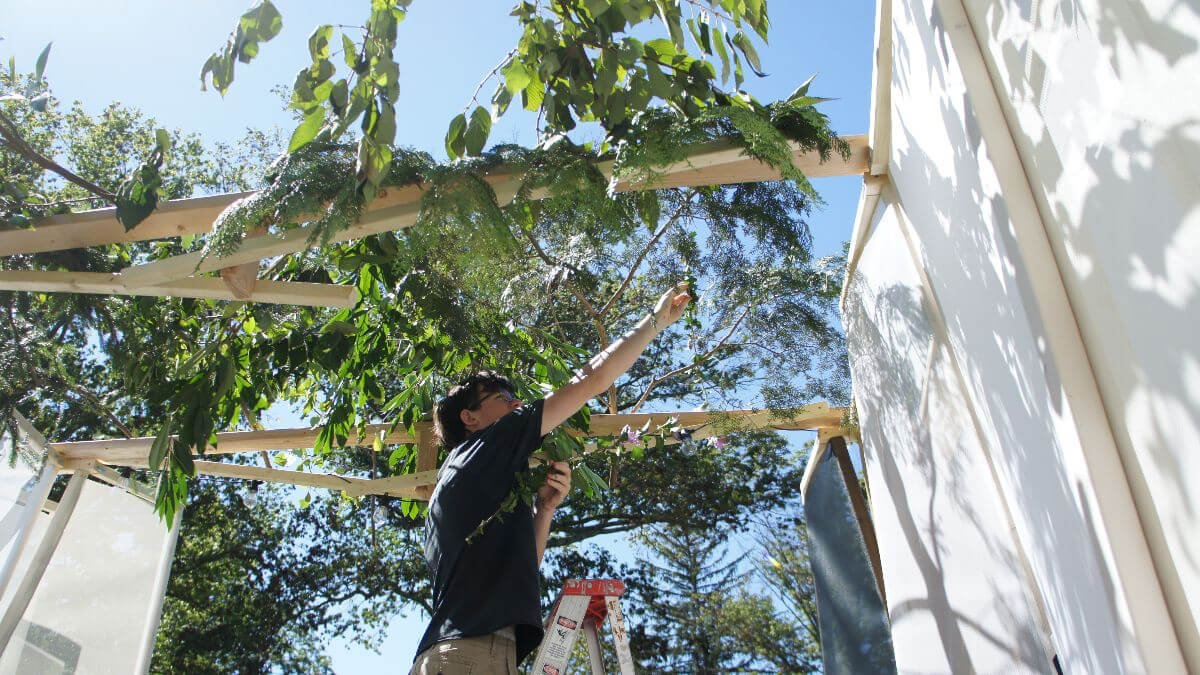
“Sukkot is a harvest celebration, but it is also meant to highlight the importance and fragility of shelter,” said Zinder. “Thanks to the phenomenal professional and student designers involved, and to the commitment of key partner and sponsor organizations, we expect Sukkah Village 2021 will capture the imaginations of eventgoers and inspire them to contribute to solutions for the range of critical issues facing New Jersey, such as homelessness, hunger, and a growing affordable housing gap.”
A roughly two-hour train ride south of the storied New Jersey college town in Washington, D.C., another free public sukkah exhibition recently opened to coincide with Sukkot. Running through October 3, Sukkah City x DC, presented by the Capital Jewish Museum and National Building Museum in collaboration with the Edlavitch DC Jewish Community Center (DCJCC), features seven sukkahs designed by noted architectural firms including, among others, SmithGroup and hord | coplan | macht. Those sukkahs, “imaginative and expressive structures that highlight key social justice themes” per the National Building Museum, are on display on the west lawn of the museum and on the campus of the DCJCC. Like Sukkah Village 2021 in Princeton, Sukkah City x DC also features complementary programming that dives deeper into the social issues at hand.








